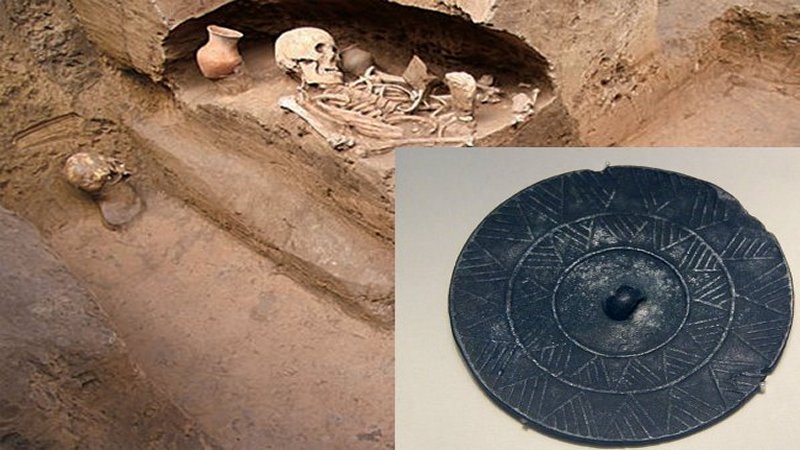Surprising Time Capsule In Antarctica – Evidence Of Toxic Heavy Metal Pollution 800 Years Ago
Jan Bartek – MessageToEagle.com – While examining ice cores from Antarctica, scientists found evidence of toxic heavy metal pollution caused by humans, predating the Industrial Revolution by centuries. This surprising time capsule allows scientists and historians to link Earth’s history with that of human societies.
Antarctica. Credit: Adobe Stock – Goinyk
Human activity, from burning fossil fuels and fireplaces to the contaminated dust produced by mining, alters Earth’s atmosphere in countless ways.
In a recent study published in Science of the Total Environment, researchers determined ice cores from Antarctica show that lead and other toxic heavy metals linked to mining activities polluted the Southern Hemisphere as early as the 13th century.
“Records from polar and alpine ice reflect past changes in background and industrial toxic heavy metal emissions. While Northern Hemisphere records have been used to evaluate environmental effects and linkages to historical events such as foreign conquests, plagues, economic downturns, and technological developments during the past three millennia, little is known about the magnitude and environmental effects of such emissions in the Southern Hemisphere or their historical linkages, especially prior to late 19th century industrialization,” the researchers write in their study.
“Seeing evidence that early Andean cultures 800 years ago, and later Spanish Colonial mining and metallurgy, appear to have caused detectable lead pollution 9,000 km away in Antarctica is quite surprising,” said Joe McConnell, Ph.D., research professor of hydrology at Desert Research Institute (DRI) and lead author of the study.
The Discovery of America by Johan Moritz Rugendas (1802-1858). Credit: Public Domain
It is the first time that scientists have assessed human impacts on lead pollution in Antarctica as far back as 2,000 years ago. It is also the first detailed assessment of thallium, bismuth, and cadmium pollution. In addition to lead, these heavy metals (save for bismuth at low levels) are considered highly toxic and harmful to human and ecosystem health.
The science team found that the first increase in heavy metal pollutants, specifically lead, started around the year 1200. Interestingly, the date is associated with the establishment of urban communities by the Chimú people on the north coast of South America.
“These settlements required vast amounts of silver and other metals obtained through mining,” said University of South Florida archaeologist and study coauthor Charles Stanish, Ph.D.
Graphical summary of the study data showing the increase in heavy metal pollution found in five East Antarctic ice cores over time. The heatmap in the upper left corner depicts the simulated flow of heavy metal pollution from Potosi in South America throughout the Southern Hemisphere and to Antarctica. Ice cores locations are shown as cyan circles Credit: DRI
Lead is often found in silver ores, and samples of lake sediments in the Potosí region of Bolivia also suggest lead emissions throughout the 12th and 13th centuries, consistent with the Antarctic ice records.
More lasting and consistent pollution began soon after the 1532 arrival of Spanish settlers in South America when Potosí became the primary supply of silver for the Spanish Empire and the largest single source of silver in the world.
The ice records reveal a marked decline in lead pollution between approximately 1585 to 1591 when severe epidemics ravaged Andean communities. By comparing silver registrations at the Colonial Mint in Potosí to the ice core data, scientists discovered a connection with the pollution drop in the Antarctic.
“It’s pretty amazing to think that a 16th-century epidemic in Bolivia altered pollution in Antarctica and throughout the Southern Hemisphere,” said DRI post-doctoral researcher and coauthor on the study, Sophia Wensman, Ph.D.
U.S. ice core driller collecting a core used in this study as part of the Norwegian-U.S. scientific traverse of East Antarctica. Credit: Stein Tronstad/NPI
“Although Antarctica’s remote location thousands of kilometers from South America and Australia means that only trace amounts of pollutants are deposited and preserved in the ice, the precisely dated, year-by-year records can give insight into how, and when, human pollutants impacted the entire hemisphere,” added coauthor and atmospheric modeler, Andreas Stohl, Ph.D., of the University of Vienna.
The research team now hopes the techniques developed in this study can be used to refine the understanding of pre-industrial pollution levels in the Arctic, where mining and metallurgy were more pronounced far earlier in human history than in South America.
The study was conducted by an international team of scientists led by the Desert Research Institute and published in the Science of the Total Environment.
Written by Jan Bartek – MessageToEagle.com – AncientPages.com Staff Writer














